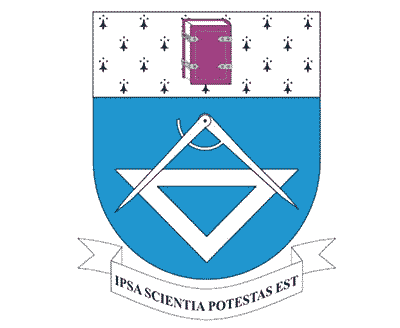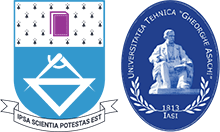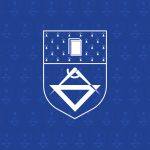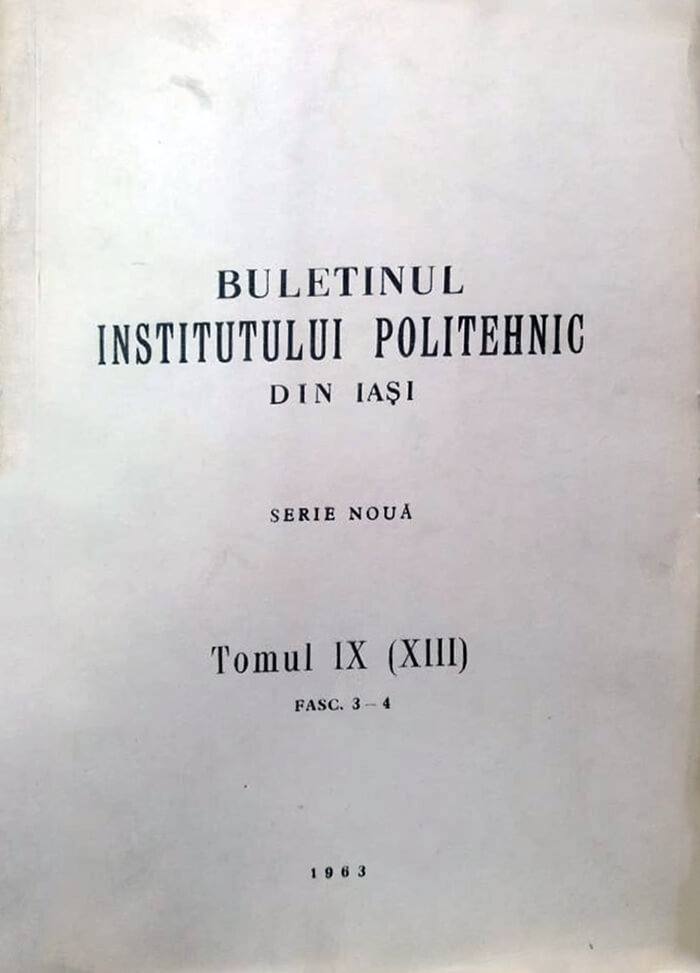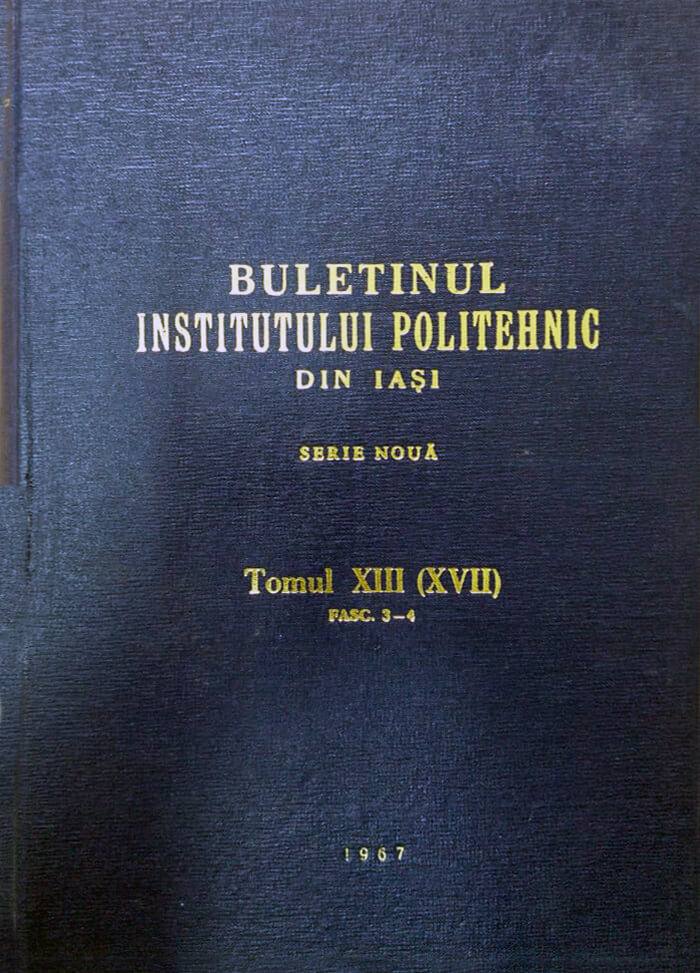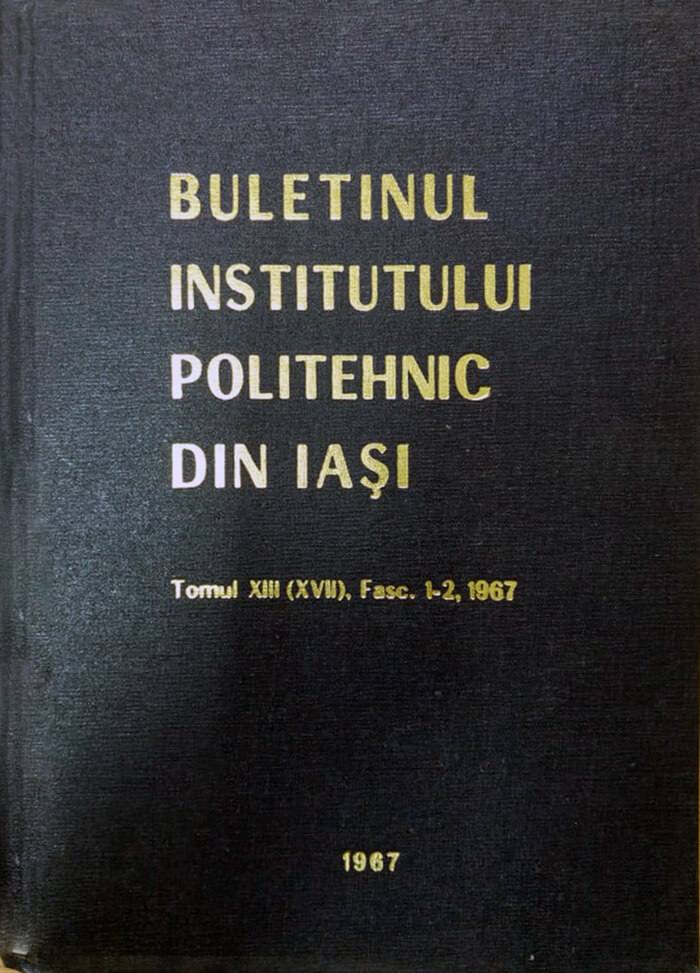The first issue of the Bulletin of the Polytechnic Institute of Iași was published in 1946, two years after the end of the Second World War, at the initiative of the illustrious Romanian researcher Dimitrie I. Mangeron. The science magazine was – and still is – owned by the Gheorghe Asachi Technical Institute, now known as the Gheorghe Asachi Technical University of Iași (TUIASI). It has seen from the beginning a rapid rise in popularity within the international, European especially, science community, and is still seen as one of the most successful research magazines of the past decades. It was designed as a place where the academic community from the Iași Technical Institute could publish their latest findings, where international papers, sent by foreign publishing houses, could be reviewed, and finally, as a medium of scientific dissemination of information. In the communist era, the Bulletin of the Polytechnic Institute of Iași was one of the few connections allowed by the regime with the international science community in various technical domains.
The national and international renown came with the good reviews the Iasi journal got in international science magazines and also with the constant editorial exchanges with other science journals from all over the world. In just a couple of years after its launch, the Bulletin of the Polytechnic Institute of Iași was a constant presence in libraries of 80 countries from all over the world. Over 2.500 publications sent in Iași for reviews have been registered in the Bulletin’s Library. The collection contains monographs and treaties written by researchers from important universities and research institutes from all over Europe and other continents.
Dimitrie I. Mangeron has edited the science journal for more than 40 years, establishing guidelines that are being followed even in the current editions. The first series of the Bulletin, 1946 – 1949, has been the complete work of Dimitrie I. Mangeron, from writing, to collecting manuscripts and keeping in touch with the authors. During this time, two young researchers joined him – Hugo Rosman and Alfred Braier. Driven by the passion for science and the enthusiasm of youth, their whole activity being, at first, voluntary.
They became editors in 1960, joining professor Mangeron in the editorial board. The illustrious Romanian researcher was still the one coordinating the whole activity, handling the exchange and correspondence. Alfred Braier and Hugo Rosman were in charge of keeping in touch with authors and proofing the editions before sending them to the printing house.
From 1969, the Bulletin of the Polytechnic Institute of Iași has eight distinct sections, distinctive to each research domain.
- Mathematics. Theoretical mathematics. Physics
- Chemistry
- Electrical Engineering. Electronics. Automations
- Technical Mechanics
- Constructions. Architecture
- Hydro Amelioration
- Textiles. Leather
- Social-Economical Sciences
All the sections had two annual editions, in two volumes, with the exception of „Hydro Amelioration” and „Textiles. Leather”, which only appeared once a year. Professor Alfred Braier was the editor in charge of four sections: Mathematics. Theoretical mathematics. Physics (1), Technical Mechanics (IV), Textiles. Leather (VII) and Social-Economical Sciences (VIII), whilst professor Hugo Rosman handled the other four sections: Chemistry (II), Electrical Engineering. Electronics. Automations (III), Constructions. Architecture (V) and Hydro Amelioration (VI). During those years, the Bulletin of the Polytechnic Institute of Iași was authorized to publish research papers in English, French, German, Italian and Russian. All of the articles had Romanian summaries.
„The golden age” of the Bulletin’s existence was in the 60s, when international authors were a regular presence in its editions.
Three Nobel Prize laureates published papers in several editions of the Bulletin. Louis de Broglie, who won the Nobel Prize in 1929 for the discovery of the wave nature of electrons, published four different scientific articles in 1963, 1964, 1966 and 1968. Italian chemist Giulio Natta, who won the Nobel Prize for Chemistry alongside Karl Ziegler in 1963 for their discoveries in the field of the chemistry and technology of high polymers, published two articles in 1967. Finally, American physicist John Hasbrouck van Vleck, who won the Nobel Prize in 1977 alongside Phillip Warren Anderson and Sir Nevill Francis Mott for their fundamental theoretical investigations of the electronic structure of magnetic and disordered systems, published one article in 1970.
Another perk of „the golden age” was that the Bulletin’s editorial board received a large number of books, sent by international renowned publishing houses, for reviews. Those books were almost impossible to come by in the communist regime, which didn’t provide funding for such acquisitions. Following those exchanges, the Bulletin of the Polytechnic Institute of Iași formed tight bonds with those publishing houses, who kept sending books that replenished the Central Library of the Technical Institute.
During the 70s, the journal started to have administrative problems, especially regarding its funding. There were issues that couldn’t be printed because there wasn’t enough funding to buy paper. These delays meant falling behind the international scientific community in the 80s. After the Romanian Revolution in 1989, the Bulletin hit another rough patch. The editors had to work overtime in an enormous effort in order to recover a one year delay in publishing past editions.
Professor Dimitrie I. Mangeron continued to oversee the editing of the publication until 1986, for over 40 years. He died on the 27th of February 1991, in Iași, and his entire archive was donated to Gheorghe Asachi Technical University. From 1987 to 1996, professor Mihail Voicu, the acting interim president of the Romanian Academy – Iași Branch, led the editorial board of the Bulletin of the Polytechnic Institute.
From 1991, the Bulletin has a new section – Computer Engineering and Automatic Control. The former Technical Mechanics section became Machine Manufacturing and Hydro Amelioration is now Hydro Technical Engineering. In 1993, the editorial board created the IXth section, Material Science and Engineering, and in 1998 they added the Xth section – Social Sciences.
Now, the Bulletin of the Polytechnic Institute of Iași has ten sections with four editions per year:
- Computer Engineering and Automatic Control
- Chemistry and Chemical Engineering
- Machine Manufacturing
- Constructions and Architecture
- Electrical Engineering. Energetics. Electronics
- Hydro Technical Engineering
- Mathematics. Theoretical mathematics. Physics
- Social Sciences
- Material Science and Engineering
- Textiles. Leather
Six of these sections have been accredited in 2011 by the National Council of Scientific Research in Higher Education in the B+ category, one section in the B category, two in C and one in D. The articles published in the Bulletin can be found in international databases like Zentralblatt, Index Copernicus, Ultrich’s, ProQuest, EBSCO and DOAJ. At the end of 2016, the Bulletin had had 196 scientific journal exchanges with prestigious universities and research institutions. The collaboration extends to 34 countries from five continents.
